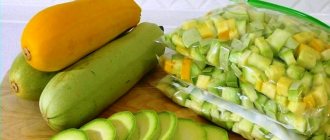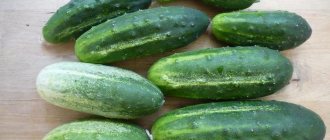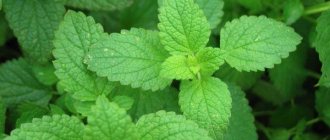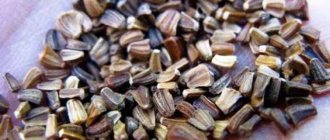When to sow zucchini seedlings
Compared to other crops, there is no need to rush into planting zucchini. The date is chosen taking into account the fact that planting in open ground is carried out 20-25 days after the seedlings ripen.
Experienced gardeners claim that planting can be done as early as April - May. At the same time, it is important to focus on the climatic features of the region.
Landing can be carried out in the following regions:
- Moscow region;
- in Siberia;
- in the Urals.
So, in the Moscow region, sowing is carried out at the end of April, and planting is carried out in the last days of May. In colder regions, such as the Urals and Siberia, sowing is carried out during the May holidays, and planting is carried out in early June.
In the southern regions, you can sow at the end of March, and plant in the ground at the end of April
Favorable days according to the lunar calendar
For a high-quality harvest, it is better to plant zucchini seedlings taking into account the position of the moon. Detailed dates of auspicious days will be given in the table below.
| Month | date |
| March | 2-6, 12-14, 26-29 |
| April | 1, 2, 24, 25, 27-30 |
| May | 2-4,6, 15-17, 20, 21, 25, 26 -31 |
| June | 2-4, 12-14 |
As you can see, you can plant zucchini almost all spring and early summer. Now, let's move on to those dates when planting is not recommended.
Unfavorable time for planting.
| Month | date |
| March | 9, 19-21, 24 |
| April | 8, 15-17, 23 |
| May | 7, 13, 14, 22 |
| June | 5, 9 -11, 21 |
It is not recommended to plant on these days, because You may not only fail to get a harvest, but also destroy your crops.
Sowing dates taking into account the cultivation region
A good crop harvest can be obtained if it is planted on time and with the necessary regular care. Let's take a closer look at when and in which regions you can start planting zucchini.
Regions and timing of planting in open ground:
- Ural, Siberia. From June 10, after the end of frost.
- Moscow, Ufa, Chelyabinsk. From May 10, with additional shelter.
- Yekaterinburg, Perm and other northern regions. Since May 15, under cover. It is worth choosing varieties that ripen quickly.
- Voronezh, Saratov. From April 10.
- Rostov, Krasnodar, Volgograd, southern regions of Ukraine. From March 10.
During these dates, planting can be carried out either by seeds or through seedlings.
To correctly calculate the date of planting in the ground, 25-30 days should be added to the indicated favorable date.
Preparing zucchini seeds for planting
Varieties and hybrid forms of zucchini bred by domestic breeders are cultivated mainly in garden plots in the central and northern regions of our country. Such varieties and hybrids are most adapted to Russian soil and climatic conditions and have excellent nutritional characteristics. The harvested crop has good shelf life and is also suitable for canning.
Planting zucchini seedlings: main stages and rules
Grown zucchini will be strong if the soil and planting material are properly prepared.
The landing stages will be as follows:
- seed preparation;
- choosing a pot for planting;
- land preparation;
- sowing seeds.
Now, let's study each of the stages in more detail.
Seed preparation
To begin with, you need to choose the right zucchini seeds for seedlings. To avoid making mistakes, you should select bags only in specialized stores. Their expiration date must be fresh and the packaging intact. Then, they need to be properly prepared.
Seeds are prepared as follows:
- A simple option is to leave it in warm water for 2-3 hours. This activates germination.
- Next method. Add a growth stimulator. This could be Zircon, Epin, Energen, NV-101.
- Germination is a common method. To do this, the seeds are covered on all sides with cotton cloth or cotton pads. Moisten with water and place in a room with a temperature of +22-26 degrees. They need to be moisturized every day to prevent them from drying out. After 2-3 days, the seeds can be placed in the soil. If the seeds do not hatch, they are thrown away.
Sprouted zucchini seeds
Preparing zucchini seeds for seedlings is simple and the whole process does not take much time.
Soil selection and preparation
In order for the harvest to please you with high-quality fruits, it is better to choose saturated soil. High-quality soil should have the following properties:
- breathability;
- moisture permeability;
- looseness.
In special stores, it is possible to purchase a ready-made soil mixture with the necessary components.
This is what soil for zucchini, pumpkin, melon or watermelon has. You can make it yourself. To do this, you need:
- 2 parts non-acidic peat;
- 1 part humus;
- 1 part river sand.
Before use, purchased soil must be treated against microbes . You can bake it in the oven or hold it over a pan of boiling water. Afterwards, the ground is watered with a fungicidal solution.
Selection of capacity
Choosing the right container for planting is important for a given crop. Seedlings cannot be moved, so you should resort to picking. When planting in open ground, it is better to use the transshipment method.
The correct container should be:
- individual;
- have a volume of 500 ml;
- holes are required at the bottom.
The holes have an exception only for peat types.
Direct sowing
Planting zucchini follows a simple pattern and does not require special skills.
Sowing has the following stages:
- A drainage layer is laid, usually it is 1.5 cm. Crushed brick or perlite can be used as it.
- Place the soil at a short distance from the walls of the pot. Layer – 1.5 cm.
- Place the seeds. For them, a hole is made to a depth of 2-3 cm and filled with soil.
- Watered. The water should brew and have a temperature of +20-22 degrees.
- Create a home greenhouse. The pot is wrapped in plastic or covered and moved to a warm place.
An important condition when planting is that the growing area must be well lit.
It is better to place a lamp with a timer over the pots, which will turn the light on and off at the set time.
How to care for zucchini in open ground
In addition to proper planting, zucchini requires proper care - then the plant will be healthy, strong, and capable of producing a high-quality and abundant harvest.
Hilling and loosening the soil
Good yields can be obtained by maintaining water and air permeability and soil looseness. To ensure this, it is necessary to loosen the soil 2-3 hours after watering. Loosening should be very gentle and shallow, due to weak and thin roots located close to the surface of the soil.
The amount of loosening depends on the composition of the soil. The highest frequency of the procedure occurs on loamy soil, since it quickly forms a hard crust after moisture gets on its surface.
Another important procedure is systematic weeding, which does not allow weeds to grow and not absorb all the beneficial substances that were intended for zucchini. It is especially important to do weeding at the very beginning of crop growth, because if young plants do not receive nutrients in the required quantities due to weeds, they will not be able to develop normally.
Watering
Despite the fact that zucchini is a drought-resistant crop, it still loves moisture, so it needs to be provided with abundant watering. For this water procedure, you should take warm (heated in the sun to +22..+23 ̊C) and settled water. If you do not adhere to this rule, you can provoke massive rotting of young ovaries on the bushes.
Important! It is necessary to pour the liquid only at the root of the plant, but do not allow water to get on the ovaries and leaves so that rot does not begin to develop.
It is recommended to water the vegetable rarely, but quite generously. Optimal watering scheme:
- Before the flowering phase begins: water the seedlings once a week, calculating 8-10 liters of water for each 1 m2.
- During the fruiting phase: increase the amount of watering to 2-3 times a week, maintaining the same volume of water. It is possible to water the crop once a week, but in this case you need to double the water consumption.
It is best to use a watering can for watering, since when using hoses, the root system can be exposed under the pressure of water (in addition, most of the moisture can get on the foliage and ovaries).
Note! If erosion of the roots has already occurred, then they need to be covered with a 3-5 centimeter layer of humus and peat.
Zucchini requires timely moisture, however, they do not tolerate excess moisture in the ground due to rotting of the tips of the fruit. If this happens, then the only way out is to cut off the affected area, burn the cut area on a candle flame, and then the vegetable will continue to grow.
Necessary conditions for seedling growth
Ease of cultivation also means simple growing conditions.
To stimulate growth, zucchini needs:
- sufficient amount of light;
- suitable temperature;
- sufficiency of moisture;
- correct landing in a permanent place.
When planting, it is worth keeping in mind that all points must be taken into account. Thus, the temperature will decrease at night. During the day, the optimal readings will be +20-25, and at night +15-17.
When planting in open ground, the temperature may deviate slightly from normal. For a young sprout, hardening is necessary, i.e. It is worth planting young zucchini only taking into account standard standards
If the sprouts do not have enough water and light, they begin to hurt, stretch out and wither. To avoid problems, artificial lighting is added. It is turned on in cloudy weather or before 12 noon.
As soon as the first shoots appear, the daytime temperature should be between +15 and +22 degrees. It is better to maintain the night temperature between +12 and +17.
Watering
It is recommended to add moisture to the soil once every 5 days. It is worth checking the moisture content of the soil in advance.
Irrigation features:
- You can water only with settled water (the liquid collected from the tap should stand for 2 days).
- You should not pour water under the root, this will help avoid blackening of the stem.
Zucchini seedlings require a lot of moisture, but the soil should not be over-moistened, because... this will lead to system decay
What and when to feed seedlings
Fertilizers for zucchini should also be applied according to certain rules. As a rule, fertilizing is carried out only 2 times.
When to fertilize:
- The first feeding is carried out 7 days after the appearance of the first shoots. To do this, use 0.5 teaspoon of urea dissolved in 1 liter of water.
- For the second stage, use nitrophoska, dissolving 1 tsp. in 1 liter of water. The second feeding is carried out 7-10 days after the first.
Plantings need to be fertilized carefully. Before each application of fertilizer, the plant must be watered well; this will better absorb the fertilizer and protect the stems from burns.
Pests and diseases
However, despite preventive measures and proper care, sometimes zucchini still gets sick. In order for the fight against zucchini diseases to be successful, you need to know what diseases zucchini suffers from and what pests can affect your crop? The most common insects that infect pumpkin insects are aphids and whiteflies. Slugs can also cause problems for zucchini.
The melon aphid appears on zucchini in humid and warm weather. It sucks juices from the ground parts of plants, damaging stems, leaves, flowers and ovaries. Among the folk methods of combating aphids, a good result is obtained by triple treating zucchini at weekly intervals with a solution of 300 g of soap or liquid dishwashing detergent in 10 liters of water. If this measure does not give the desired result, you will have to resort to treating the zucchini with insecticides - Karbofos, Phosfamide, Decis, Metafos, although this is undesirable.
Whiteflies can cause serious damage to a garden. Their greatest numbers are observed in the second half of summer. They settle on the underside of the leaves, and traces of their vital activity - sticky sugary secretions - become a medium for the development of sooty fungi, from which black marks appear on the plants, subsequently leading to wilting of the leaves. The easiest way is to wash off the whiteflies from the leaves with water, after which you need to loosen the soil around the bushes to a depth of 2 cm. If this method of controlling the pest does not give results, you will have to resort to treating the zucchini with a solution of the Komandor insecticide in a ratio of 1 g of the drug per 10 liters of water. This amount should be enough for 100 m². Spray the zucchini after harvesting the fruits.
Slugs are collected by hand, and if there are too many of them, bait is placed around the area: dark beer is poured into bowls and when the slugs crawl towards the smell, they are collected.
- List of the best small-fruited varieties of remontant strawberries
The most dangerous diseases for zucchini are powdery mildew, as well as bacteriosis, white and root rot, black mold and anthracnose.
Powdery mildew covers the ground parts of plants with a grayish-white loose coating, which over time becomes brown, the leaves under it dry out, the fruits become deformed and stop growing. The disease develops under conditions of sharp fluctuations in humidity and air temperature. At the first signs of the disease, it is necessary to treat the area with a ten percent solution of fungicides - Topsin or Bayleton. After two weeks, if necessary, the treatment is repeated.
Symptoms of black mold appear as angular or round rusty spots on squash leaves that eventually develop a dark coating of fungal spores. Parts of the leaf blade under the spots dry out and crumble, leaving holes in the leaves. The fruits shrink and stop developing. Diseased plants must be immediately removed and burned, and after harvesting, all plant debris must be removed from the area.
Bacteriosis is an infectious disease that manifests itself as oily spots on the leaves, which gradually darken, and in these places the integrity of the leaf plate is disrupted. Watery spots and ulcers form on the fruits. Most often, the disease affects plants in humid, warm weather. A measure to combat the disease is to treat plants with one percent Bordeaux mixture.
White rot, or sclerotinia, covers parts of the plant with mycelium - a dense white coating, under which they become soft and slippery, and then hard and black tubercles form in these places, the leaves dry out, and the plants wither. The disease usually affects zucchini plantings that are too dense in cold, wet weather. Sick plants are removed immediately. You can treat zucchini with a fungicide, but this is unlikely to help.
Root rot is a disease that causes zucchini to turn yellow, their lower leaves wither, the stems turn brown and turn into sponges at the bottom. This usually happens due to planting plants in unheated soil, watering with cold water or excessive feeding of plants. Eliminate deficiencies in care and treat the zucchini with copper-containing preparations.
Anthracnose appears as round, yellow-brown spots on the leaves that turn into holes when they dry out. The leaves curl, the zucchini dries out, and all above-ground parts of the plants are affected. Most often, the disease attacks zucchini in rainy, hot weather. The disease can be defeated by treating plants with one percent Bordeaux mixture or dusting with ground sulfur at the rate of 15-30 g per 10 m² of planting.
Nuances of cultivation
Planting through seedlings is a labor-intensive process, because... It is difficult to transplant them, and they do not get used to a new place. Transplantation must be thought out in such a way as to move the seedling along with the lump of earth.
Features of sowing:
- It is better to plant in peat cups, which will begin to decompose over time.
- Seeds must be treated with boiling water or a special compound before planting.
- It is better to sow in places where there is no direct sunlight and constant shade.
If desired, during the watering process, a growth stimulator can be added to the soil.
Sowing in boxes
Planting seedlings is the safest for this crop. The duration of cultivation depends on the variety. As a rule, such information is contained on the bag of seeds.
Advantages of growing in boxes:
- bushes are not afraid of the influence of pathogenic microorganisms;
- plantings are not affected by weather conditions;
- vegetables ripen quickly.
When planting in beds, you should count the date from the time of the last frost in the region.
In the greenhouse
If a greenhouse is built on the site, then planting can be carried out directly in it.
For landing the following rules are taken into account:
- Seedlings should be prepared by May - June.
- The period of appearance of the first shoots after planting. It depends on the variety.
- Viability of sprouts.
- The period of adaptation when the sprouts are accustomed to external conditions.
When grown in a greenhouse, it is worth providing the sprouts with regular ventilation to reduce the influence of the greenhouse effect.
Variety of zucchini
The taste of zucchini varieties is not much different, but the same cannot be said about their appearance. They vary in color:
- green;
- yellow;
- white;
- cream;
- striped.
The shape of zucchini is cylindrical, club-shaped and spherical. According to their internal consistency, they can have dense and juicy pulp or fibrous pulp, similar to spaghetti.
The State Register of Plants of the Russian Federation, which does not include all varieties and does not include varieties of foreign selection, lists 174 varieties of zucchini.
Zucchini also differ in terms of ripening: early varieties ripen in July, and late varieties grow fruit until October.
Growing vegetables in normal times does not present any difficulties. But it is more interesting to get a very early harvest, when the price for it in the store is quite high. This is also not difficult to do, but it is troublesome. Every gardener should know how to grow zucchini on the balcony.
It is important to be able to prepare seeds and land for sowing, sowing dates, and agricultural technology. Step-by-step instructions for growing a popular vegetable are presented in the article.
Transplantation to a permanent place
The vegetable requires special soil quality and a certain temperature level. To begin with, you should prepare the beds. It is important to take into account the rules of crop rotation.
Zucchini can be planted after:
- cabbage;
- tomato;
- potatoes;
- Luke;
- parsley
Before planting, you should choose the right bed. It is chosen depending on the available space on the site
Choosing a landing site
First of all, choose a suitable place. Depending on the chosen location, the speed of ripening and quality of the crop will depend.
It should be:
- well lit;
- have a saturated soil composition;
- undergo treatment against underground pests.
The place should be out of direct sunlight, with sufficient shade and humidity
Soil preparation
The bed should be prepared in the southern part of the garden. It is better to select loamy soils with neutral acidity. Before planting, the beds must be prepared.
To prepare you need:
- Dig up the soil and apply fertilizer.
- If the soil acidity is high, it must be reduced by adding lime. If the composition contains a lot of alkali, then peat is added.
- If groundwater passes close to the surface, then the soil must be drained.
- The soil must be treated against harmful insects, this way you can protect the crop from the invasion of moles.
The bed is dug to a width of 0.7 m. The length is selected depending on the free space on the site and the desired number of bushes
. Having prepared the site, the seedlings are planted.
At what depth and distance to plant zucchini?
Planting zucchini can be carried out according to several schemes. As a rule, standard intervals for preparing holes and deepening seeds are used.
The landing standards are:
- distance between fruits 60*60.70*70;
- deepening of seeds in sandy soil 5-6 cm;
- recess for clay soil 3-4 cm.
Before planting, it is important to water the soil with sufficient water.
What to put in the hole when planting zucchini
You can get a good harvest not only thanks to the correct location of the bushes, but also due to high-quality soil.
Before planting in the ground you should add:
- superphosphate 1 tsp;
- urea 1 tsp;
- wood ash 1 cup.
Adding fertilizers to the soil
After adding the additives, the soil is watered and the seeds are planted. The water should be at room temperature.
Possible difficulties
If problems become noticeable during the cultivation of the crop, for example, the sprouts begin to wither and new ovaries do not appear, it means that an error was made in the care or during the planting process. At this moment, you need to act immediately.
Main problems:
- the seedlings began to die;
- the seedlings stretched out;
- the plant turned yellow and withered.
Next, we will consider in detail what to do if a particular problem occurs.
The seedlings die
If wilting of the sprouts is detected, they should be transplanted into new containers and the volume of mineral supplements should be increased.
The causes and symptoms of death may be as follows:
- seedlings slow down and die;
- the cause may be poor soil quality;
- lack of seed treatment also negatively affects the growth and development of bushes.
Mineral fertilizing can be applied if the leaves have already turned white.
The seedlings began to stretch out
To begin with, it is worth determining the reason for the pulling.
There may be several of them:
- Excess nitrogen. In this case, the sprouts are immediately replanted and the use of nitrogenous fertilizers is avoided.
- Outgrown. This can be determined by the growing season.
Seedlings can outgrow due to a lack of light or too much light. It needs to be regulated in practice.
The plant turns yellow and withers
If yellowing occurs, nitrogen must be added to the soil. It is found in maximum quantities in urea and saltpeter.
The reasons for yellowing are:
- rare watering;
- too frequent moisturizing;
- the water is colder than 25 degrees or has not been infused.
Using cold water will cause the roots to die and the entire root system to fail.











